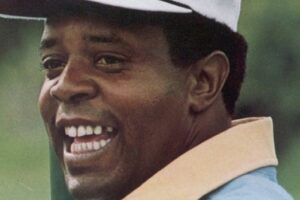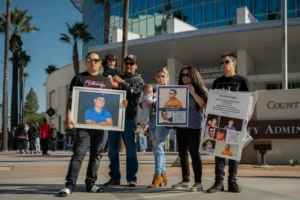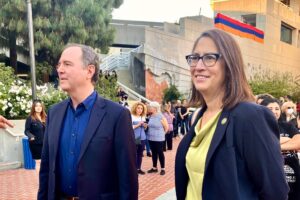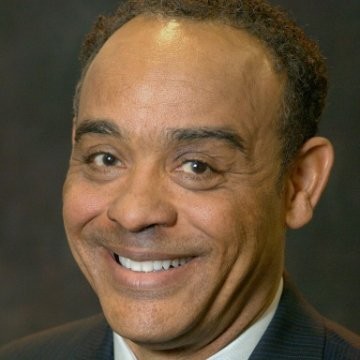By Earl Ofari Hutchinson
Contributing Columnist
Thirty-plus years ago the nation watched in horror, courtesy of a videotape, a horde of Los Angeles police officers surround, beat, kick and Taser Black motorist Rodney King into near-comatose submission; he lay begging and pleading for his life.
Fast forward 30-plus years later and the nation watched a horde of LAPD officers again surround, manhandle, hogtie and repeatedly Taser into near-comatose submission Black Keenan Anderson as he lay begging and pleading for his life. There was one major difference between the two brutal assaults: King lived to tell the tale, Anderson did not. He died of cardiac arrest hours later.
The glaring, obvious and deeply troubling question that the King beating first raised, and the Anderson Tasing raised again, was this: How much has really changed within the LAPD in the 30-plus years between the two incidents?
The question is less a question than a deep cloud that has hung over the Los Angeles Police Department for decades. It is LAPD reform. To be more specific, how committed is the department to completing the reforms?
If Anderson is any example, the answer is problematic to say the least. Take Tasing. It is not a benign, non-lethal weapon. It is a deadly weapon.
Anderson was Tased not once, but six times. This is way too much and literally overkill. It indicates a training, tactical and judgmental breakdown. That hardly bodes well for the department that a pack of officers could be so ill-trained in the use of a potentially deadly weapon that it resulted in a death.
The Los Angeles Police Commission, tasked with civilian oversight of the department, arguably has made some bold, innovative and demanding policy changes in the use of force, discipline, how abuse complaints are handled, as well as tackling the issue of racial profiling.
The commission pushed for a more minority- and gender-diverse, and inclusive LAPD, from top to bottom. However, it’s still the use of force issue — and Tasing certainly falls in that category — that is still the never-ending Achilles heel of the department. It’s one that the commission must grapple with once more, in the wake of Anderson’s death.
A few years back, the Police Commission tackled this issue head on when it implemented a policy change in the use of force. The change was spelled out in the preamble of the department’s official use-of-force policy.
It stated that officers “shall attempt to control an incident by using time, distance, communications and available resources in an effort to de-escalate the situation, whenever it is safe and reasonable to do so.”
The change didn’t spell out the exact steps the department would take to make de-escalation a reality on the streets. Even if it did, the commission formulates policy; it does not enforce it. That is strictly in the hands of the chief.
That can be a good and bad thing, depending on the chief, the circumstances, the pressure brought to bear, and the willingness to demand accountability from the rank and file.
The policy change is only the latest in a series of changes that the commission has advocated, grappled with, and implored the LAPD to make in the past few years. After the King beating in 1991 and the riots in 1992 there was much hand-wringing and soul-searching over how to reform the LAPD.
LAPD Chief Michel Moore has acknowledged that the death of Anderson and several other recent deaths at the hands of LAPD officers are “disturbing.” They are more than that. They raise the question again: Did they need to happen at all?
A firm, rigidly enforced policy of when use of force can or can’t be applied, one that emphasizes both de-escalation and punishment when de-escalation doesn’t happen, is the only way to ensure that men such as Anderson do not continue to become another tragic statistic.
The evidence that such a standard is in place, totally understood by all LAPD personnel and continually drilled in them by top brass, is not convincing. Again, Anderson is a sad testament to that.
Then there is the discipline issue. Officers who misuse deadly force or commit acts of misconduct must be punished. Lack of punishment reinforces the notion that officers can administer street-corner justice. That is the practice that got the LAPD into so much hot water in years past.
Los Angeles County District Attorney George Gascón promised to be a new kind of district attorney, that he would look long and hard at police misconduct and, where warranted, prosecute officers who overuse deadly force. He must be as good as his word.
There are simply too many dubious deaths at the hands of LAPD officers to not take some action. Moore also must assure that the LAPD is on the right track by publicly pledging to complete all the recommended reforms, with special emphasis on a crackdown on the overuse of deadly force by officers. Anything less simply assures more cases like Keenan Anderson.
Earl Ofari Hutchinson is an author and political analyst. He also is the host of the weekly Earl Ofari Hutchinson Show on KPFK 90.7 FM Los Angeles and the Pacifica Network Saturdays at 9 a.m.











